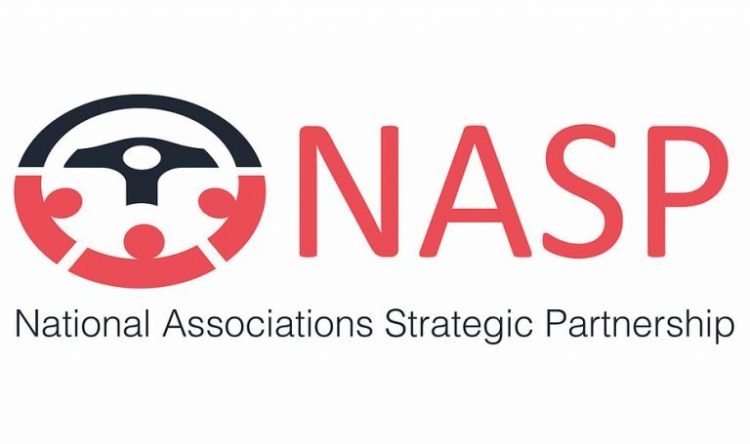DVSA provides more answers about Standards Check changes
NASP gets reply from DVSA
From National Associations Strategic Partnership:
Please be aware that NASP will be meeting with DVSA in early September for further discussions and to air any concerns and questions not previously forwarded.
DVSA Q&A (Additional Questions)
Prioritising standards checks
The following questions were received from the National Associations Strategic
Partnership (NASP) at 13:30 on Tuesday 24th August 2021. The following answers were compiled by DVSA and are correct at time of publishing on 10:30 on Friday 27
th August 2021.
Q1 Does this mean if we don’t flag any of the triggers ADIs will have no standards check at all or will there still be one every four years?
ADIs whose data flags 4 parameters are likely to be called sooner than those who hit
0-1 parameters. ADIs who present fewer than five tests in a 12 month rolling period
or those for whom we hold no data can still expect to be called at least once their
registration period, as now.
ADI’s presenting a high standard of candidate are less likely to be required for a
Standards Check. We are looking to offer high performing ADI’s the same
Engagement call without a Standards Check. We will consult NASP about this at the
earliest opportunity.
Q2 How can DVSA be gathering information correctly when they aren’t
conducting complete tests for the full time? The driver faults will be
incorrect. How can this be implemented until DVSA are conducting full tests
again?
Driving faults is only one parameter. Terminated tests are likely to record a serious
fault or the examiner needing to take action. The same procedure for the
curtailment of tests is consistent across the Agency.
Q3 Currently there is no definitive time for the length of a driving test because it can be terminated as soon as a serious/dangerous fault, or totting up of faults, and yet the 5 descriptors are collated on a test being 38 – 40 minutes long. Unless all the descriptor information is collected over tests of a standard time then there is discrimination being placed against those records where a
student does a full, 38 minute test. They are not brought back early, and
therefore are predisposed to create more faults for the journal to record.
However, a candidate who is presented and is terminated by the examiner after
only 5 minutes, has no opportunity to the exposure that the previous candidate
had, and so the ADI that brings the poorer prepared student is being rewarded?
Driving faults is only one parameter. Terminated tests are likely to record a serious
fault or the examiner needing to take action. Example – If you have a 60% pass rate
and average 10 driver faults per test you would only be on 1 parameter so we would
not be prioritising you. If you are repeatedly presenting candidates who are
unsuccessful because of serious faults and examiner taking action you will also have
a low pass rate, you will be showing on multiple parameters and be prioritised for a
standards check.
Q4 DVSA state we can call for a standards check, where we have to give a reason for why one is required, what reasons will be accepted?
It is for the ADI to explain why in their particular circumstances they require a
standards check. For example, if you wish to improve your standards check score
after undertaking further training. Any requests will be looked at on a case-by-case
basis.
Q5 Exactly when do these changes start? What dates are being used for the data collection?
The data used is from the last 12 month rolling period. The changes to prioritisation
based on parameters has started and is being used by our deployment team. This
provides the capacity to continue prioritising part 2 and 3 tests whilst focusing our
standards check resources on those ADI’s who could benefit most from an
Engagement call and standards check.
Q6 This system only works when the instructor’s badge is displayed during test.
Surely therefore it should become mandatory to display the badge, otherwise
an instructor is deliberately manipulating the figures upon which they will be
based?
One of the purposes of the Register is to ensure a level playing field for instructors.
However, the principles of better regulation promote the adoption of a more focused approach to the assurance of standards. Mandating the display of the badge would help to ensure fairness and consistency, and further improve DVSA’s ability to identify where support is most needed. This will be explored with NASP at a meeting in September.
Q7 Can we receive copies of ALL tests reports for any candidate we take to test?
We do not always see this since its gone digital. If we are now being monitored
on this, then surely we should have access to the same information 1st hand
not via the pupil?
As the test is the candidates test then first and foremost the end of test summary
should be provided to the candidate. The summary also includes additional
information and links to other relevant topics following the test, their right to appeal,
statement of failure etc. The candidate can easily forward the email to the ADI email
address if they choose. Providing an additional email address at the point of test is
an option that will be discussed and considered in the future, in consultation with
NASP.
Q8 Do the DVSA realise the pressure we are under to take pupils to test, who are borderline, they won’t defer their test as there are none available?
DVSA is developing a communications package of measures to incentivise pupils to
be properly prepared for the test. This should support ADI’s and reinforce their
messages to their pupil’s regarding test readiness..
We do genuinely empathise with the difficult decisions to be made by candidates and ADIs, given the current test slot availability. However, the ADI and candidate must work together, though their established trusted relationship, and with reference to the Drivers Record to assess skills and road readiness on all roads (urban, rural, motorway) in all weather and lighting conditions. ADIs play a critical role in preparing candidates for a lifetime of safe driving, not just a 45 minute driving test. We appreciate it is a difficult conversation, but it is one that could save lives if the candidate is not ready for independent driving.
Q9 We have often been told it is not our test, but the pupils, but now apparently it is. Whose test is it?
It is the candidate’s test but we want the learner and ADI to agree when they are
ready for their test. It is the candidates test, however we can assume candidates
paying for a service from an ADI are expecting a good standard of tuition. It is DVSA’s responsibility to approve people to be driving instructors and make sure they provide good quality training.
Q10 If the pass criteria (as set by legislation is 15 or less DFs) then why are we
targeted at 5 driver faults, can you explain please?
The average number of driver faults on tests presented by all ADI’s on the register is
below 5. An ADI with pupil’s who have a higher number of average faults would still
only be highlighted on one parameter.
Q11 Does this mean that someone could be called for a SC every few months (if it’s done on a rolling 12 month average)? At the moment with no further
information from the DVSA, theoretically an ADI could be asked to book the
next SC the day after the first one.
We will not call an ADI every few months, we want ADI’s to have the opportunity to
follow guidance given during the engagement call and standards check and get the
support they require to improve outcomes.
Q12 Will the cost of our certificate change? As we currently all pay for 1 SC per 4 years, will we have to pay for the extra tests (if needed) & get a reduction if not taking any SCs?
We are looking at splitting the ADI fee so that those who need additional support pay more than those who don’t. This requires regulatory change, we will be discussing this further with NASP. This follows the principle that the user pays for our services, such that we can operate an minimal cost to the tax payer.
Q13 Challenging pupils with any kind of learning disabilities could find it hard to find instructors to teach and take them to test. How keen would instructors be to take them? Wont this lead to discrimination?
ADI’s are professionals that should adapt their training to suit the needs of their pupils. Though we recognise a range of factors may affect a candidates performance on the day of test, these should [and are] factored into their instruction to prepare the candidate. A candidate should only be presented for test when the ADI is satisfied they can drive independently, in a range of weather, light and road conditions, safely.
Q14 When we used to be sent our test stats annually, it was common to hear
instructors say they were inaccurate, is the system being used reliable? If so
could the DVSA explain to ADIs how the figures are collated to allay their fears.
Data is captured from the iPad and collected as management information. Examiners
input the information during the test and have the ability to make any amendments
during the test, if required. All faults are then cross referenced during the debrief as
they appear on a debrief screen. This process is more accurate than the previous
scanning of test reports as it does not rely on accurately scanning differences in
examiners writing / marking as data is now recorded electronically.
Q15 What is the current number of “enforcement officers” that are going to deal with this workload? Are these enforcement officers able to mobilise around the country to where the problems are or will they only target those ADIs that are within their local travel to work area and hence potentially miss some of the “worst offenders”? Are there enough enforcement officers to make the engagement calls for 30 minutes each one?
ADI enforcement examiners have always covered large geographical areas as part
of their role, this will not change. They work flexibly to ensure our services are
delivered as efficiently as possible. We hope the new Engagement call is a success
however currently we do not know what the take up will be. Our examiners will use
time available around their current programmes and we will review take up of this
initiative in a few months’ time. The ADI Enforcement team consists of approximately
60 examiners nationally.
Q16 If the ADI explain on the engagement call the reasons behind the test fails such as a pupil with learning difficulties will the SC then not go ahead if the reasons are well given?
While pupils with SEN might take longer to learn, or need to be taught in a different
way, an ADI should be presenting pupils for test only when they are properly prepared to drive on their own.
Q17 Can DVSA confirm this only applies to ETA/P and not ETA/V? Or is it both?
ETA physical only
Q18 Can DVSA clarify whether using ADI personal information is fully compliant with GDPR, and if so, on what basis? The assertion here is very much that the test is the candidates test and not the instructors.
We have carried out a DPIA, and updated the ADI privacy notice as a result. It is
important to note we are not gathering or using any additional data, beyond that
already gathered, it is simply being using in a more focused way for its intended
purpose.
Q19 Have DVSA considered the opportunity for ADI Examiners to have a
conversation with ADI’s who are close to triggering the required criteria before
such time as they may actually trigger the criteria. This encourages better
partnership working and gives ADI’s an early opportunity to address any
particular issues or make relevant representations as to what may have seen a
recent downturn in their pupils (candidates) test performance.
We are currently prioritising those ADIs who have met 3 or 4 parameters, but will
consider what support we can give to other ADIs.
Q20 Will female instructors, who may bring more female candidates to test have any discretion given the percentage of test passes for females is around 43% yet for males is around 50%.
A candidate should only be presented for test when the ADI is satisfied they can drive independently, in a range of weather, light and road conditions, safely.
Q21 The pass rate has been set at 55%. There has been previous mention that this will be assessed on a local basis, however this is not what has been published. Will local data be used, and will this be made available, in real time or will it be 55% nationally (the pass rate nationally is consistent at around 46%)
Pass rate is an indicator and is set at 55% nationally. The national average pass rate
for pupils that are presented for test by ADI’s only is currently 52%, as this process
is about raising standards the indicator is set at a level that should be achievable as
a professional standard.
Q22 Test centres have varying pass rates themselves, should the pass rate to be a trigger be less than the percentage for the main test centre used by the ADI?
Pass rate is one parameter, it is also an outcome reflecting training standards.
Q23 Will a Grade B instructor who consistently delivers high quality pupils to test will automatically be “promoted” to a Grade A? A grade A who is
underperforming will clearly be called to a SC.
No. ADI’s will still need to score grade A on their standards check to be recorded as
a grade A.
Q24 As instructors in general now have no access to the test report as it goes
straight to the candidate (in most cases) and they are not allowed to sit in on
tests, instructors have a real challenge about faults recorded how does DVSA
intend to address this gap in data for instructors?
The electronic end of test summary can be easily forwarded by the candidate to the ADIs email address. Providing 2 email addresses at the point of test will be discussed and considered in the future.
Q25 What role does being a Grade A or B play? Conceivably an A could fall foul of the triggers and an B might not. The new system also favours those instructors for whom the primary goal is to teach to pass the test, and to focus on not making faults, rather than taking a broader view of preparing learners to drive in environments that they might not encountered on test and to think beyond it; does this imply that instructors who previously received an A grading are now more likely to be called for a SC over those who might have been given a lower rating.
The new policy is solely a guide to prioritising which ADIs should be called for astandards check. ADIs will still need to score grade A on their standards check to be recorded as a grade A. Pass rate is only one measure. ADIs who consistently present pupils for test only when they are ready to driver unsupervised are less likely to to be called for a standards check
Pupils that receive training that will prepare them for a lifetime of safe driving, covering all aspects of the National Standards and what is required to be a safe and
responsible driver will be far better prepared for their driving test.
This new system supports all ADI’s regardless of grade, looking at the outcomes of
their training standards (their pupil’s performance) over a period of time, as opposed
to only focusing on the grade they received on the day of their standards check. There are many high perfoming ADI’s who are grade B.
Q26 Some ADIs have received their crystal report recently and it is for 24 months. The DVSA website states its over 12 months so why is this as there is no explanation?
The old ‘crystal report’ collates two years data, we continued to issue these during
the pandemic as we wanted to capture the maximum data for ADI’s to use. We have
changed the name to ADI Enforcement Analysis Report, now driving tests are up and
running there is more data available, and in line with the new Engagement call the
data analysis reports going forward will only be for the 12-month period.
Q27 I book my client’s tests on the OBS and use my ADI number. If I then refuse to take someone who is not ready, and they go in a private car and fail, is that test still attributed to me? Or is it only taken if badge is displayed? I have heard
conflicting information on this so would like clarification please.
The data is collected only at the point of test, not the booking





